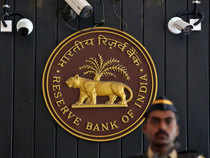MUMBAI: The RBI governor's suggestion of the need to challenge the conventional practice of small rate changes in multiples of 25 bps and instead the size of the rate change could vary to indicate the policy stance signifies RBI's intent to use communication as a policy tool instead of a vehicle of communication, according to a State Bank of IndiaNSE 0.05 % report.
RBI governor Shaktikanta Das had recently raised a point in a discussion that the central bank’s policy of revising the benchmark rates by 25 basis point (one bps is 0.01 per cent) is not sacrosanct and just a convention. He added that the monetary policy may well be served by calibrating the size of the rate to the market dynamics. The governor was trying to explain that if a 10 bps cut by the central bank could effectively communicate the intent of the regulator, then why should it lower rate by 25 bps only as a matter of convention and waste a 15 bps of rate action.
The intent of the governor looks quite positive, but futuristic as well. However, sometimes a rate cut of 25 bps or even a 50 bps rate cut does not help transmission of a rate action. So a token rate cut of 10 bps or 15 bps may not work, argues the SBI report.
“We believe that such thinking signifies the RBI intent to use communication as a policy in itself rather than the policy statement being a vehicle of communication” said, SBI’s group chief economist S SK Ghosh, in his report. “These are akin to second generation policy signals that the US Fed provides to the market now” Such `second generation’ signals help reduce disconnect with the market as the Fed had done during the global financial crisis in 2008, but does not necessarily help all the times.
China has been experimenting with rate cuts that are not multiples of 25 basis points, but it was abandoned in October 2010. Even the European Central Bank changed rates in lower multiples than 25 bps. It is believed that the advantage of a 25 basis point rate cut is the simplicity of connecting with the market.
Published On : 16-04-2019
Source : Economic Times

